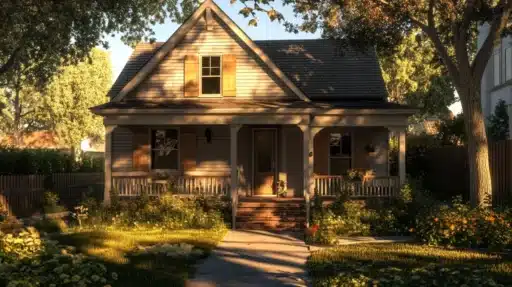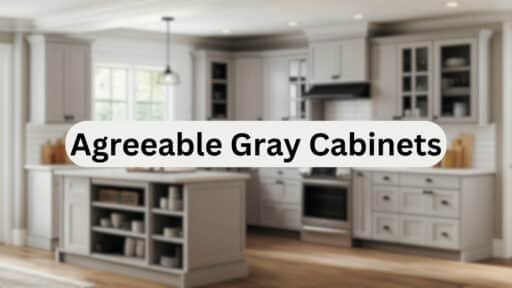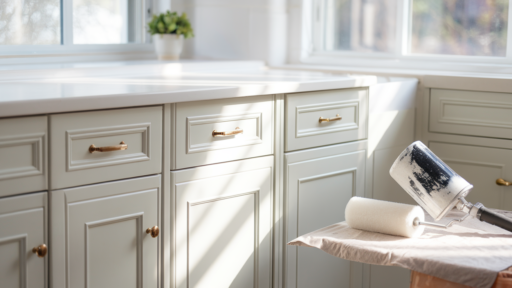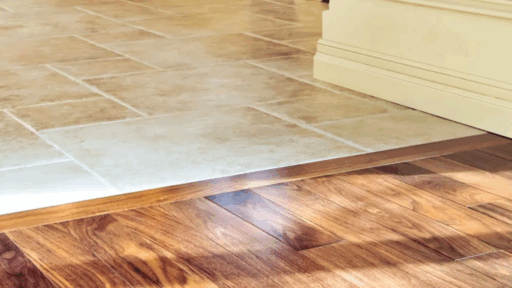I’ve always believed that small changes can make a big difference to a home’s looks.
When I first started looking into home improvements, I found that wooden shutters stood out as a simple yet effective way to improve any house’s appearance.
Years ago, people used shutters mainly to guard their homes from the weather and keep their families safe.
Today, these fixtures do much more than protect – they add beauty and value to our homes.
In this guide, I’ll show you how to pick the perfect wooden shutters for different home styles, ensuring they match and enhance your house’s unique character.
How to Choose the Right Shutter for Different Home Styles
I’ve noticed that many homeowners struggle with matching shutters to their house style.
Through my research and experience, I’ve learned that shutters need to work with, not against, your home’s basic design.
Each house style has its own special features, and the right shutters can make these features stand out even more.
When I help others pick shutters, I always start by looking at the whole house – its shape, size, and special details.
You can adjust the color, size, and style of your shutters to match your taste, but they should always respect your home’s main design.
I’ve found that this careful matching makes the difference between shutters that just look okay and ones that truly make your house look better.
1. Urban Farmhouse Style: A Perfect Match for Wood Shutters
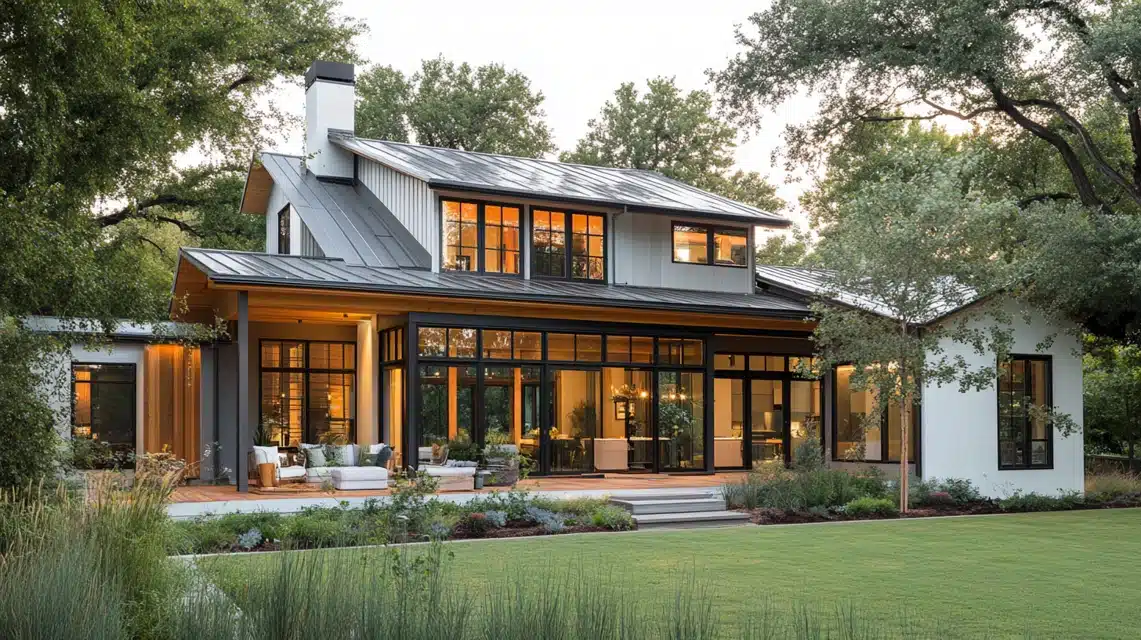
When I look at urban farmhouse homes, I see a beautiful mix of old and new.
These houses take the warm, friendly feeling of country homes and add modern touches that work well in today’s neighborhoods.
In my experience, these homes often have wide porches that wrap around the house and straight-up-and-down siding that reminds me of old barns.
I’ve found that board-and-batten shutters work best here – they fit right in with the country look while staying fresh and current.
If you want something a bit different, louvered shutters can work, too.
I often tell homeowners to use these shutters to frame their larger windows, especially around the porch area. This makes the whole house look more put-together and welcoming.
2. Craftsman Style: Simple Beauty in Wood Shutters
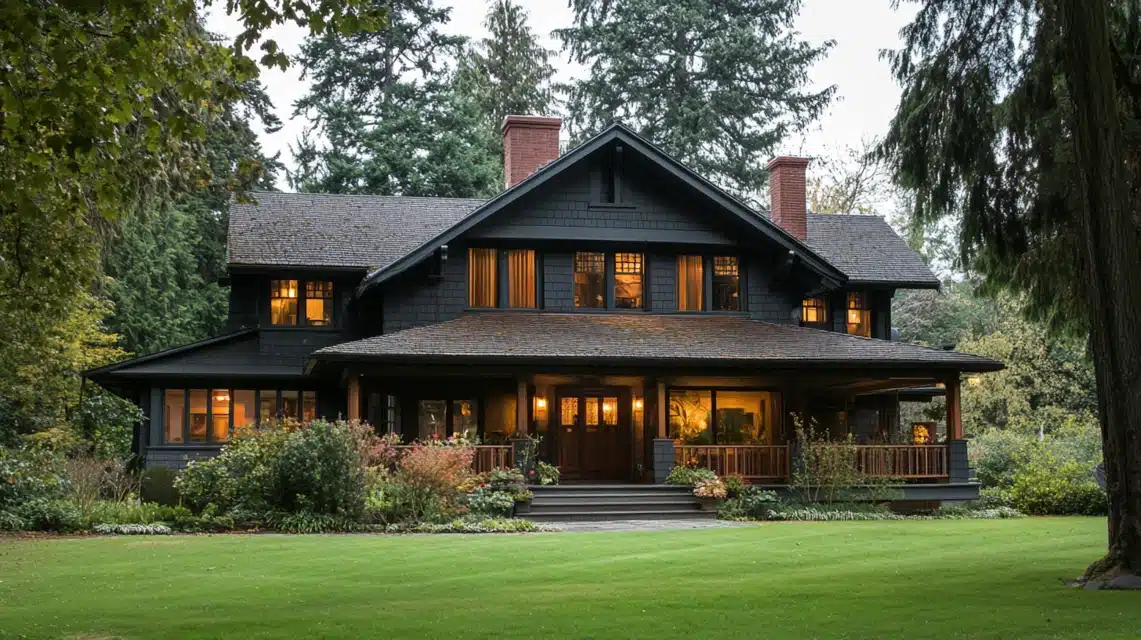
I love how Craftsman homes keep things simple while showing off quality work.
When I study these houses, I notice they don’t need fancy decorations to look good – they rely on clean, straight lines and natural materials to make their statement.
From what I’ve seen, Shaker-style shutters work really well with these homes.
But that’s not your only choice – I often suggest board-and-batten or flat-panel shutters, too.
These styles match the honest, straightforward look of Craftsman homes.
When I help pick colors, I stick to earth tones that blend with the rest of the house.
The goal, I’ve found, is to make the shutters look like they’ve always been part of the home, not something added later.
3. Colonial Style: Classic Shutters for a Timeless Design
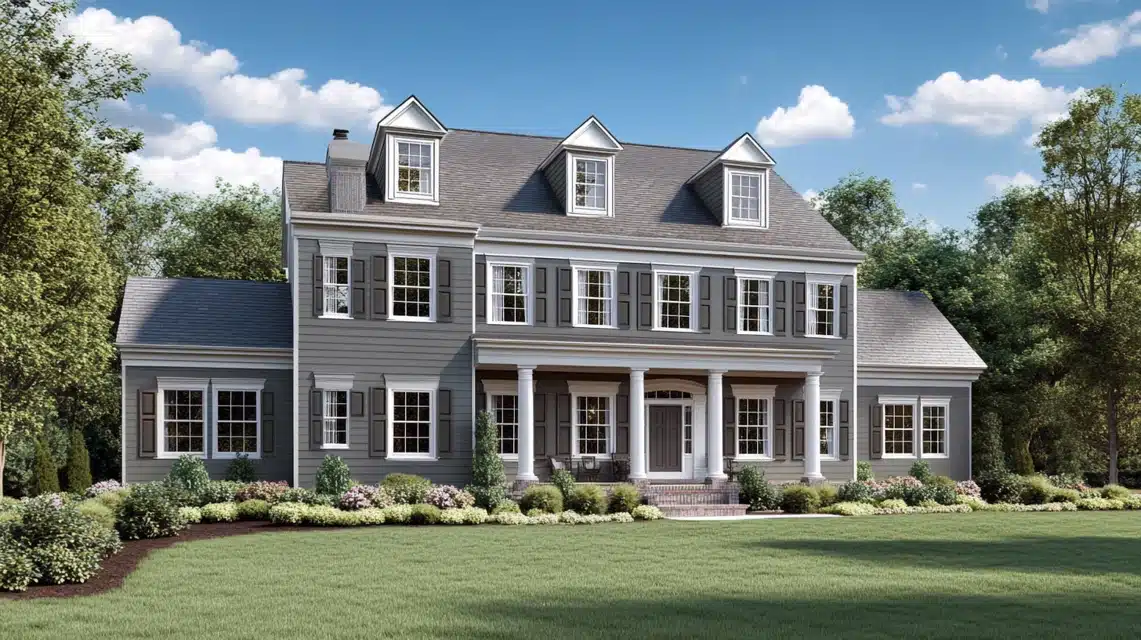
I find Colonial homes interesting because they show us a piece of early American history.
These houses have a balanced look, with windows placed evenly on both sides.
In my work with Colonial homes, I’ve noticed that the best shutter choice often depends on where you live.
For homes in the north, I suggest panel shutters – they’re a nod to the practical needs of harsh winters.
For southern Colonial homes, I usually recommend louvered shutters. I like how these shutters let air flow through while blocking strong sunlight.
When I add shutters to a Colonial home, I make sure they strengthen the balanced look these houses are known for.
4. Cape Cod Style: Cozy Charm with Wood Shutters

I’ve always admired how Cape Cod homes feel, both snug and stylish.
These houses remind me of New England cottages, with their neat, balanced designs and charming roof windows.
When I work with Cape Cod homes, I find that several shutter styles can look great.
I often suggest raised panel shutters to my clients because they’re easy to keep clean and don’t attract insects.
But I’ve seen beautiful Cape Cod homes with louvered shutters and board-and-batten styles too.
What I love most about adding shutters to Cape Cod homes is how they make the windows look larger and more important.
I always tell homeowners that with Cape Cod styles, simple shutters often work best – they add to the home’s friendly, welcoming feel without making it look too dressed up.
Should you Choose Wooden or Vinyl Shutters?
I’ve helped many homeowners pick between wooden and vinyl shutters, and here’s what I’ve learned.
Wood shutters give homes a natural, high-quality look that’s hard to beat.
I tell my clients that wood can be painted or stained in any color they want, and with good care, these shutters stand strong for many years.
However, I make sure they know that wood needs regular care to stay looking good.
On the other hand, I suggest vinyl shutters to people who want something that’s easier to take care of.
They cost less, handle bad weather well, and don’t need much attention.
The main downside I see with vinyl is that you can’t change its look as much as wood.
When helping people choose, I ask about their budget, how much time they can spend on upkeep, and what kind of look they want.
Types of Shutters for Your House
In my years working with home design, I’ve seen how different types of shutters can change a house’s whole look.
Each type has its own strengths, and I always tell homeowners to think about both style and function.
I’ve found that some shutters work better in certain climates, while others are perfect for specific home styles.
Let me share what I’ve learned about each type so you can make the best choice for your home.
1. Panel Shutters: Classic and Strong
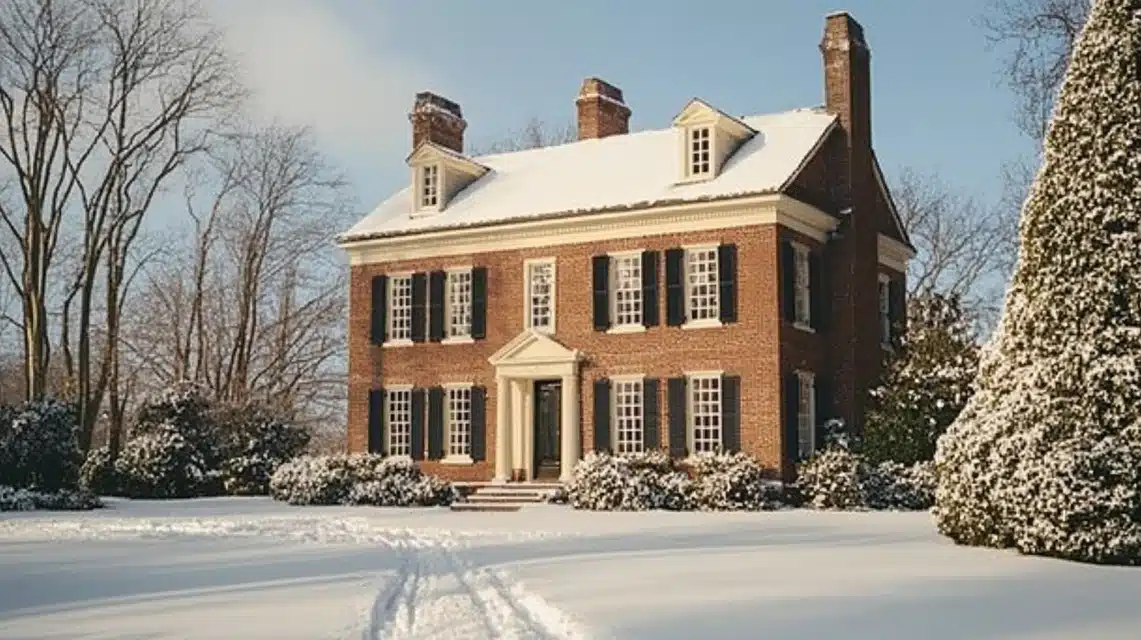
I’ve seen panel shutters work wonders on many homes.
These shutters use solid pieces of wood to create raised, flat, or recessed designs.
From my experience, they look best in colonial-style houses and homes with a more formal look.
What I really like about panel shutters is how well they keep out cold weather – I often recommend them to homeowners in colder areas.
They’re also great if you want extra security for your windows.
Every time I install these, I notice how they add a solid, substantial feel to a home’s exterior.
2. Louvered Shutters: Perfect for Airflow
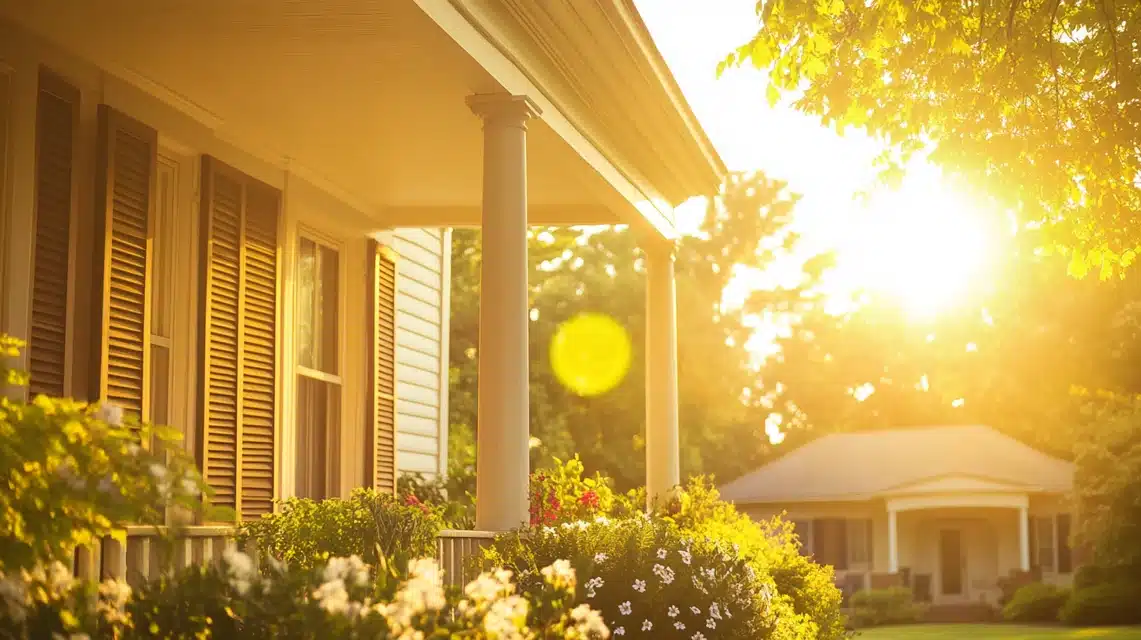
When I work in warmer areas, I often suggest louvered shutters. Their slanted slats remind me of window blinds but on the outside of your house.
I’ve found they’re excellent for letting air move through while still keeping the sun out.
If you live somewhere hot, you’ll love how these help keep your house cool.
I especially like using these on traditional-style homes where keeping that classic look is important.
The best part? You can choose between fixed slats or ones that move, depending on how much control you want over light and air.
3. Board and Batten Shutters: Rustic Appeal

These are some of my favorite shutters to work with. I build them by joining vertical boards with horizontal or angled pieces called battens.
When I put these on farmhouses or cottage-style homes, they just look right at home.
What I love most about board and batten shutters is how many ways you can customize them – you can change the board widths, batten placement, and even the pattern they make.
Every time I install these, they add such nice texture to the house’s exterior.
4. Bahama Shutters: Tropical Style and Function
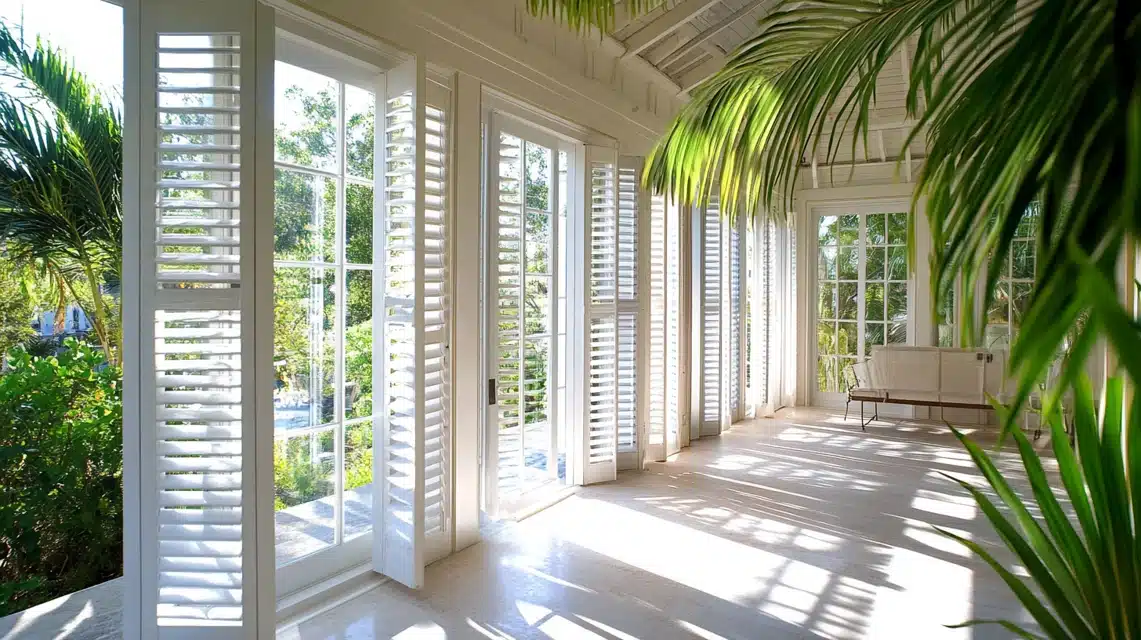
I’ve come to appreciate Bahama shutters as a smart choice in my coastal design work.
Unlike regular shutters that swing to the sides, these open up from the bottom.
I often recommend them to homeowners who want to control sunlight while keeping that beach house feel.
What I like best about these shutters is how they can stay partly open to let in light and breeze, even during light rain.
They’re perfect for homes near the water, and I’ve seen them add a nice vacation-home touch to regular houses, too.
5. Hurricane Shutters: Protection When It Matters
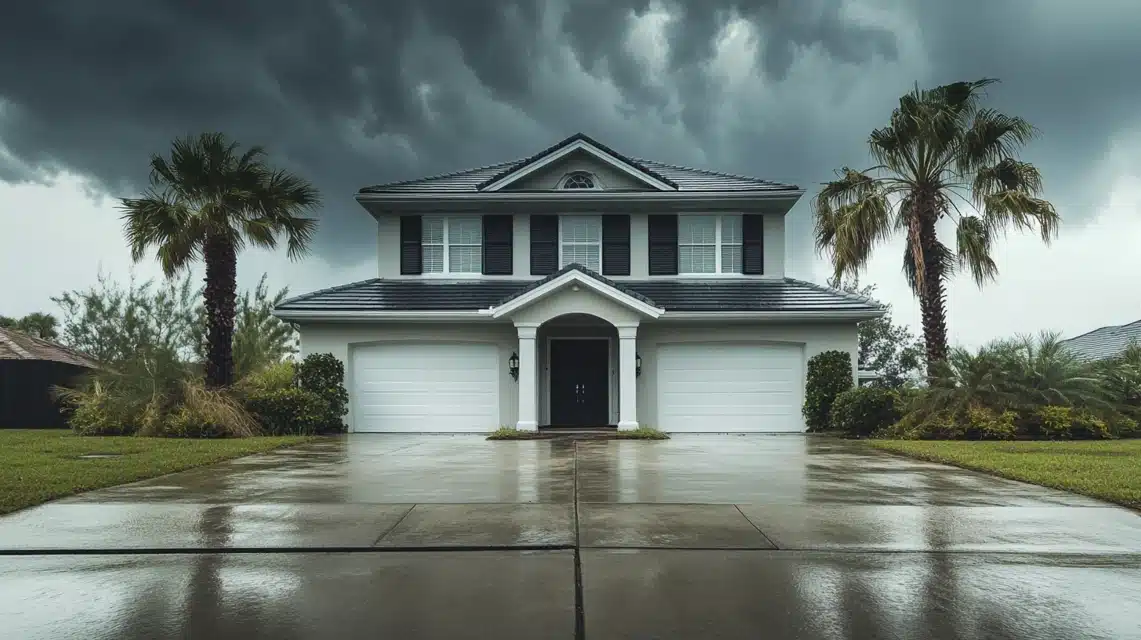
Having worked in storm-prone areas, I know how important good hurricane shutters can be.
These aren’t just about looks – they’re about keeping your home safe.
I usually tell homeowners to think of them as shields for their windows.
They’re built strong enough to handle flying objects during storms.
While they might cost more upfront, I’ve seen how much money they save by preventing window damage.
You can choose from steel, aluminum, or even special storm-ready fabrics.
6. Arched Shutters: Adding Elegance
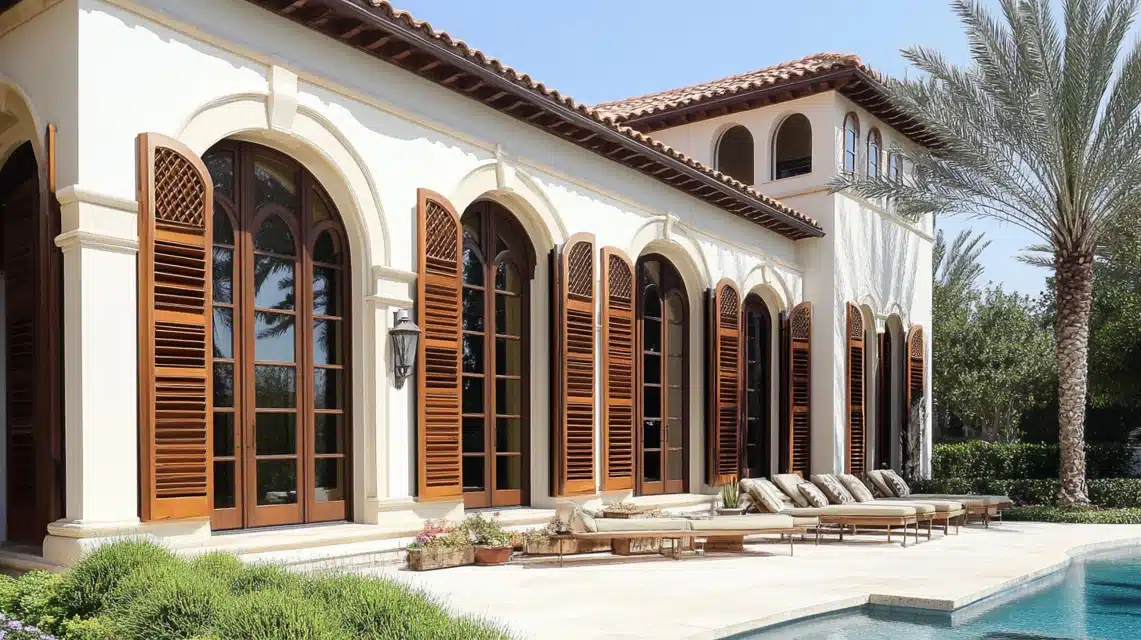
Working with arched windows can be tricky, but I love how arched shutters can make them stand out.
These shutters follow the curved shape of your window perfectly.
I often use them on Mediterranean homes or Victorian houses where that extra touch of style matters.
What I’ve learned is that getting the curve just right is key – it needs to match your window’s arch exactly.
When done well, these shutters make your windows look like artwork.
7. Bi-fold Shutters: Smart Solution for Big Windows
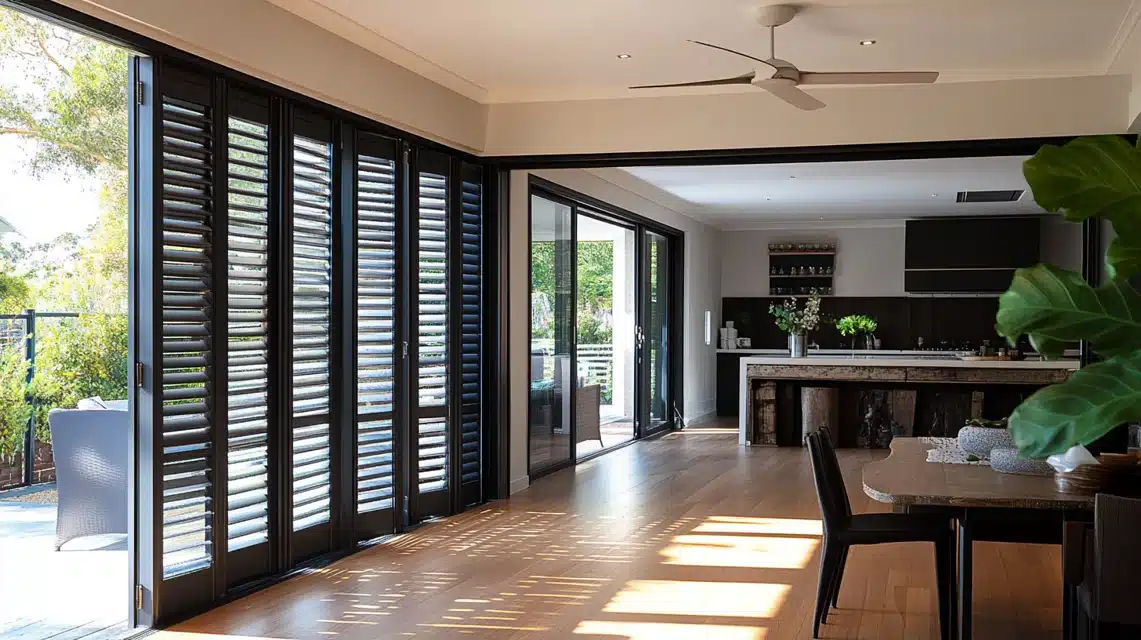
When I work with large windows or French doors, bi-fold shutters are often my go-to choice.
They fold neatly to one side, which I find really handy when space is tight.
I like how these shutters give you the best of both worlds – they’re easy to open and close, but they still look great and work well.
In my experience, they’re perfect for modern homes where you want style without giving up function.
What I love most about bi-fold shutters is how they make big windows less overwhelming while still letting in plenty of light when open.
Summing Up
I wrote this guide because I know how confusing it can be to pick the right shutters for your home.
After helping many homeowners, I’ve seen how much the right choice matters.
Think about what you need most – weather protection, good looks, or low maintenance.
Your climate, home style, and the time you can spend on upkeep should guide your choice.
No matter which type you pick, good shutters will make your house look better and possibly worth more.
If you’re still unsure, talk to a design expert who can look at your specific situation.
Frequently Asked Questions
Do People Put Shutters on Houses Anymore?
Yes, I see many homeowners still using shutters. They’re popular for both new homes and renovations, especially wooden ones that add character and value.
When Should You Not Use Shutters?
I don’t recommend using shutters when they look too small for your windows or on bay windows where they wouldn’t fit naturally.

